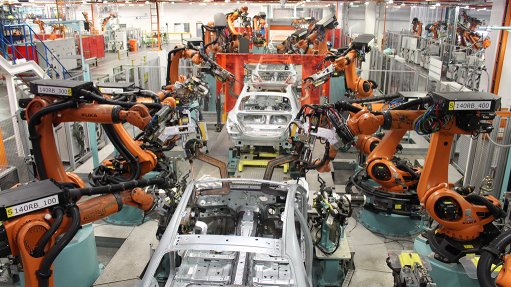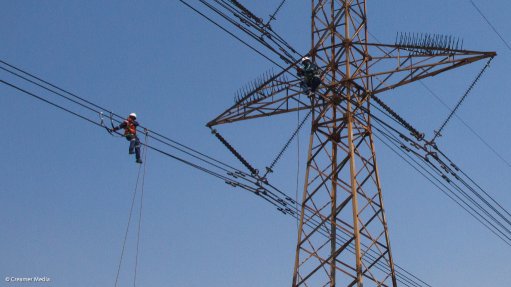Auto chip shortages to persist until 2031 but easing for advanced variants forecast as consumer electronics demand slows
Fitch Solutions says the global shortage of semiconductors in the automotive industry will remain a risk for automakers over its 2023 to 2031 forecastperiod.
“That said, we highlight that the shortage will vary within the automotive sector.”
The intelligence group recently published its ‘Semiconductor Chip Outlook: 2023 and Beyond’ report.
The good news is that Fitch Solutions believes that the shortage of advanced chips (used in infotainment systems, advanced driver assistance systems and electronic control units) is expected to ease quickly as demand from the consumer electronics sector slows.
However, the shortage of legacy chips (used in power control units, switches, safety equipment and electric vehicle, or EV, chargers) will remain in place over the forecast period as investment flows to advanced chips instead.
Fitch Solutions adds that it expects that demand for chips from the auto industry will increase over the next decade as EV adoption gains ground (battery electric vehicles, or BEVs, and plug-in hybrid electric vehicles, or PHEVs, included), which also requires the expansion of the supporting infrastructure, such as EV chargers.
Adding to the demand side are regulations mandating increased vehicle safety features.
This indicates that the shortage of chips will drag on in the automotive industry, albeit to a lesser degree, compared with 2021 and 2022, says the research group.
“We estimate that an internal combustion engine (ICE) vehicle requires around 500 to 600 chips, mild hybrid vehicles require about 1 000, while BEVs and PHEVs require 2 000 and 2 500 chips respectively,” says Fitch Solutions.
“This means that as EV production ramps up to meet climate targets and ICE vehicle sales bans draw closer, the demand for chips (especially legacy chips) will continue to accelerate.
“Currently, we expect total vehicle production globally to expand at an average annual rate of around 3.1% over 2023 to 2031, to reach an annual output level of 107-million units, up from the 81.7-million units [expected to have been produced in 2022].”
Fitch Solutions adds that it forecasts global passenger EV sales to average growth of 11.7% year-on-year over its 2023 to 2031 forecast period, reaching a yearly sales volume of about 27.5-million units by the end of 2031.
“We expect BEV sales to average annual growth of 14.3% over 2023 to 2031, to reach an annual sales volume of 20.5-million.
“We expect PHEV sales to average annual growth of 29.6% over the same period, and for sales to reach 6.9-million units annually.
“We note that PHEVs could see a stronger boost in sales if automakers shift their focus to PHEVs instead of BEVs amid very tight battery supplies.
“We believe this could further prolong the shortage of chips globally as PHEVs need more chips, compared with ICE [vehicles] and BEVs.”
Looking at the demand for chips from the commercial vehicle segment (this includes buses, vans, trucks and bakkies) Fitch Solutions forecasts that global commercial EV sales will increase by 41.6% in 2023, with average yearly growth of 20% over 2023 to 2031.
While about 80% of commercial EVs will be light commercial vehicles (vans, minibuses, bakkies and small trucks) over the forecast period, the number of chips needed to electrify the commercial vehicle segment “will remain a tough challenge for automakers to source over the short to medium term”.
Further, adding to the demand for legacy chips is the development of supporting infrastructure for EVs.
In 2022 alone, Fitch Solutions expects the global EV fleet size to have expanded by 62.7%, to reach just more than 27-million units.
Around the same time, the company estimates that the global EV charger network would have surpassed the two-million mark.
“This translates to an EV-to-charger ratio of 13.5. We consider an EV-to-charger ratio of around 5 to be able to support EV uptake and usage.
“This also means that globally the number of EV chargers will have to increase to almost 35-million by 2031 to support an expected EV fleet size of around 175-million units.”
Comments
Press Office
Announcements
What's On
Subscribe to improve your user experience...
Option 1 (equivalent of R125 a month):
Receive a weekly copy of Creamer Media's Engineering News & Mining Weekly magazine
(print copy for those in South Africa and e-magazine for those outside of South Africa)
Receive daily email newsletters
Access to full search results
Access archive of magazine back copies
Access to Projects in Progress
Access to ONE Research Report of your choice in PDF format
Option 2 (equivalent of R375 a month):
All benefits from Option 1
PLUS
Access to Creamer Media's Research Channel Africa for ALL Research Reports, in PDF format, on various industrial and mining sectors
including Electricity; Water; Energy Transition; Hydrogen; Roads, Rail and Ports; Coal; Gold; Platinum; Battery Metals; etc.
Already a subscriber?
Forgotten your password?
Receive weekly copy of Creamer Media's Engineering News & Mining Weekly magazine (print copy for those in South Africa and e-magazine for those outside of South Africa)
➕
Recieve daily email newsletters
➕
Access to full search results
➕
Access archive of magazine back copies
➕
Access to Projects in Progress
➕
Access to ONE Research Report of your choice in PDF format
RESEARCH CHANNEL AFRICA
R4500 (equivalent of R375 a month)
SUBSCRIBEAll benefits from Option 1
➕
Access to Creamer Media's Research Channel Africa for ALL Research Reports on various industrial and mining sectors, in PDF format, including on:
Electricity
➕
Water
➕
Energy Transition
➕
Hydrogen
➕
Roads, Rail and Ports
➕
Coal
➕
Gold
➕
Platinum
➕
Battery Metals
➕
etc.
Receive all benefits from Option 1 or Option 2 delivered to numerous people at your company
➕
Multiple User names and Passwords for simultaneous log-ins
➕
Intranet integration access to all in your organisation


















